A chain is only as strong as the weakest link. And if every tool in your business is a link, that means the tools you use each day play a critical role in the overall strength of your business.
In this article, we’re going to share 20 tools with you. These tools will help you tackle sourcing and creating images, video recording, writing and editing, marketing, SEO, and more. Let’s dive in!
Tools for Course Creation
In order to promote your online course, you first need to have a course. So, we’ll start there.
Most of the tools in this list are free. But if there’s one section where you should splurge, it’s here. Your course content is single-handedly the most important ingredient in your overall course business. So, if you see tools that have excellent premium features or offer paid versions, consider checking them out. The advantages may be worth the cost.
Canva
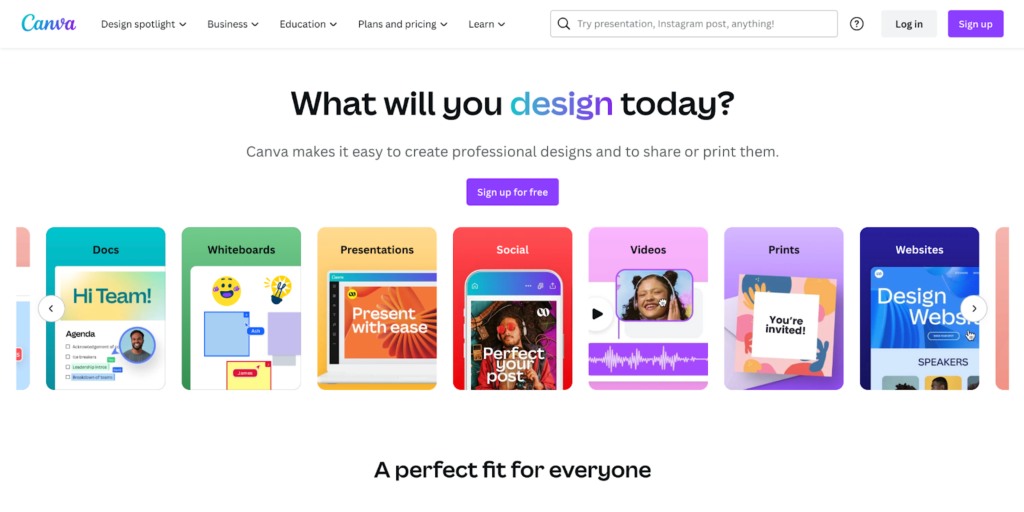
Since its origin in 2013, Canva has grown to be a staple in almost every field. Canva is a comprehensive graphic design tool that offers enough functionality for professional graphic designers but keeps things simple for your everyday user.
You can use this graphic design tool to create images and slides for your course, graphics for email marketing, logos, social media posts, and so much more.
Features:
- Over 250,000 templates
- Generous free plan
- Easy to use drag-and-drop editor
- Team collaboration
Pexels

Pexels is a free stock photo and video site that boasts over 3 million photos and videos. Users can use this visual content on their websites, social media, graphics, and online courses.
Features:
- Professional-grade photography and videography
- Library features for organizing your favorite visuals
- The Zoom integration allows you to create custom backgrounds
- Follow your favorite artists
Coverr
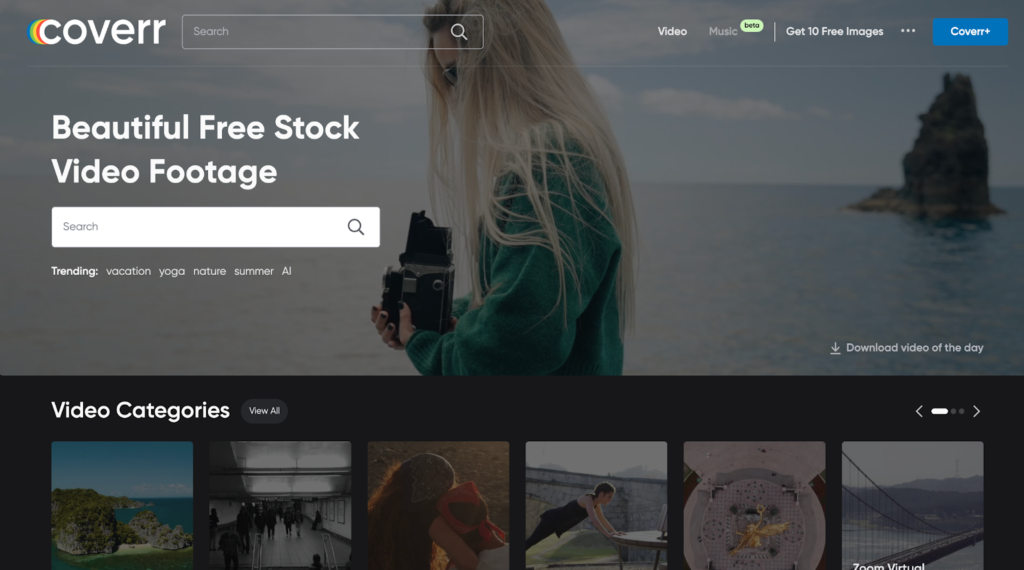
Coverr is a source for stock visuals. Since its start in 2015, Coverr has seen over 5 million downloads and hosts a large library of copyright-free videos. But unlike Pexels, Coverr specializes in videos. So if you find yourself in need of even more stock videos than what you can find on other platforms, Coverr may be the place for you.
Features:
- HD and 4K resolutions are available
- Easy-to-navigate video collections and categories
- Available API
Epidemic Sound
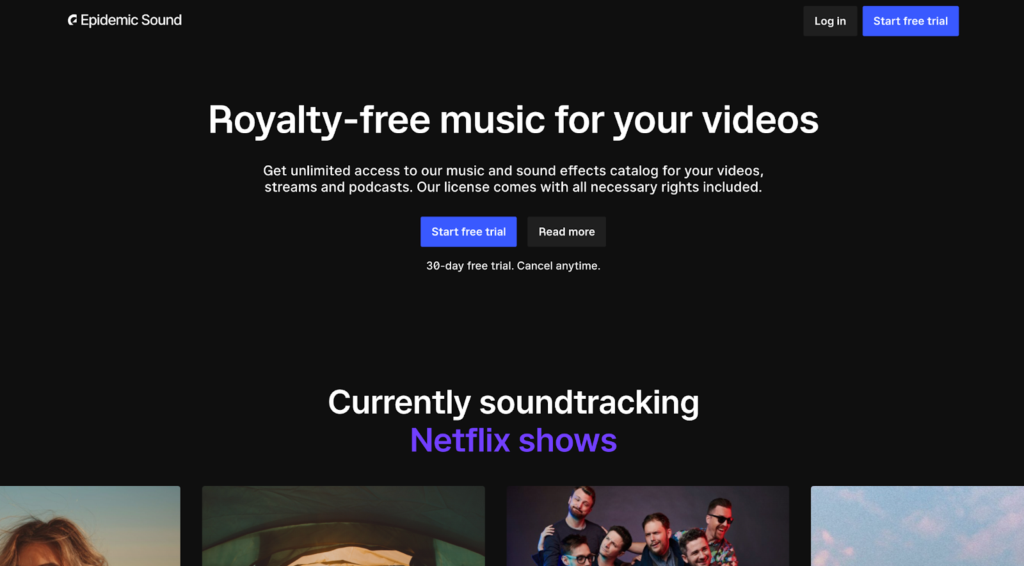
Epidemic Sound is a go-to platform for royalty-free music. This tool is especially popular amongst video content creators, like creators on YouTube, who use music in intros, outros, and as background music. While access to the library isn’t free, it does start at an affordable $9.99/month. You’re free to use their music and sounds as long as you’re a subscriber.
Features:
- Over 30,000 soundtracks and 60,000 sound effects
- Trusted by brands like HubSpot, GoPro, and Squarespace
Renderforest
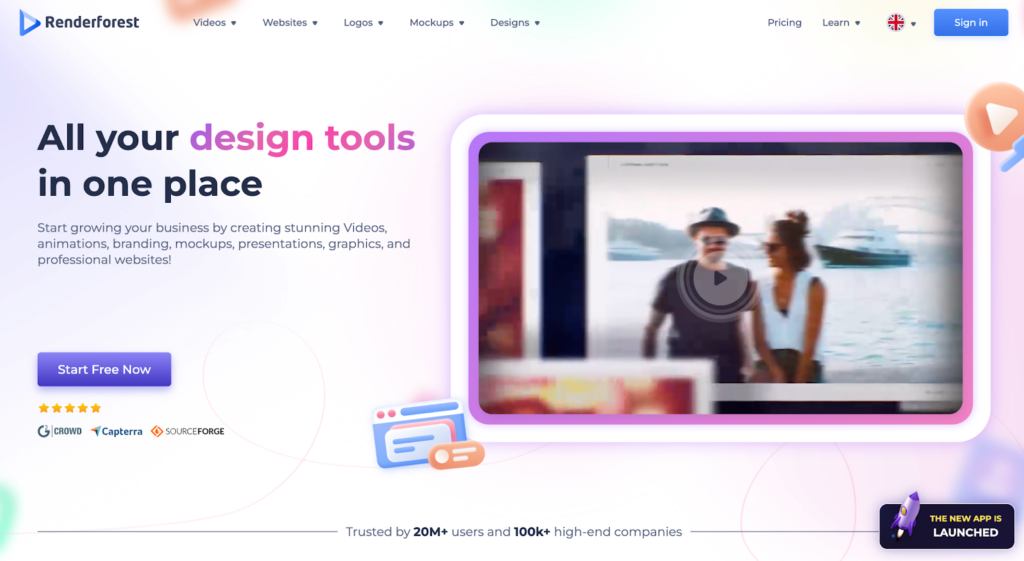
Like Canva, Renderforest is a digital platform that helps creators make professional-grade visual content. Using this tool, you can create things like 3D videos, presentations, YouTube video screens, and even websites.
Features:
- Available free plan with paid plans starting at $9.99
- 800+ video templates
- Excellent customer support
Loom

High-production videos aren’t for everyone, we get it. So if Renderforest sounds overwhelming, Loom may be the perfect tool for you.
Loom is a free online video recorder that allows creators to capture themselves, their screens, or both. After recording your content, you can edit and trim clips, add new clips, and even add buttons to external content.
The platform also allows creators to auto-generate closed captions, embed your videos elsewhere, and even draw on your screen. You’ll also be able to track valuable metrics, competition, and conversion rates.
Features:
- A generous free plan with unlimited videos and recording length starting at $12.50
- Advanced metrics tracking
- Video privacy controls
Grammarly

As the name suggests, Grammarly checks your writing for grammar and spelling errors. But that’s not all; it goes even further and helps you maintain a consistent style and voice, rewrite sentences, and adjust your tone without changing the meaning. This tool is an excellent resource for solo creators who don’t yet have script writers, educational experts, or editors helping them to create and edit their content.
Features:
- Integrates with 500,000+ mobile, web, and desktop applications
- Most features available on free plan, with premium features starting at $12/month
- Generative AI assistance
Hemingway Editor
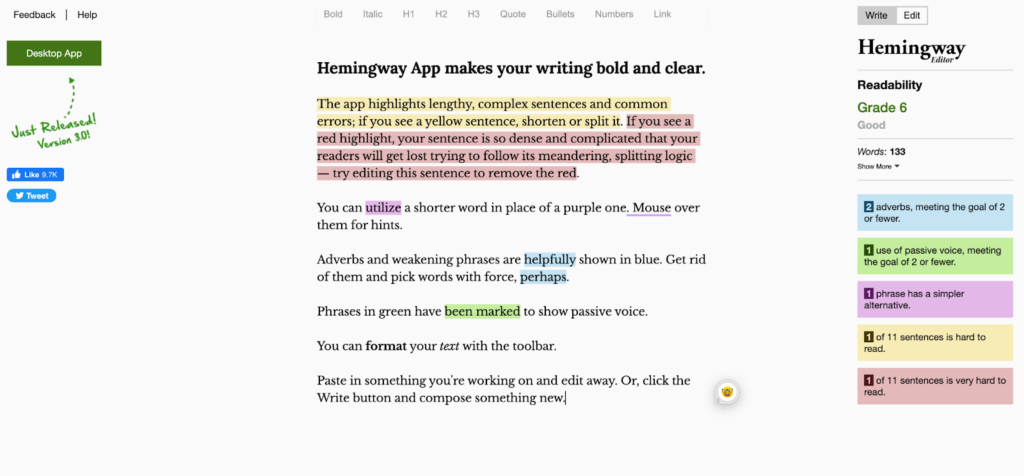
The Hemingway Editor is a popular text editor often used in conjunction with Grammarly. This free tool analyzes your text and delivers an overall readability score based on the U.S. public education system grade levels.
In addition to a readability score, the editor will also give you color-coded feedback on your adverb usage, voice, word choice, sentence structure, and sentence difficulty.
Features:
- Color-coded feedback
- Simple readability score
Tools for Online Course Promotion
Now that you’ve created your course content and it’s uploaded to Thinkific, it’s time to start promoting it to potential students.
This is where the real hard work starts, but don’t worry, we’ve got more tools to help you here too!
Search engine optimization (SEO) is the process by which you work to get your website, landing pages, course content, or other content to show up on search engines.
If you want people to find your course on Google, then these next few tools will help you do just that.
Answer the Public
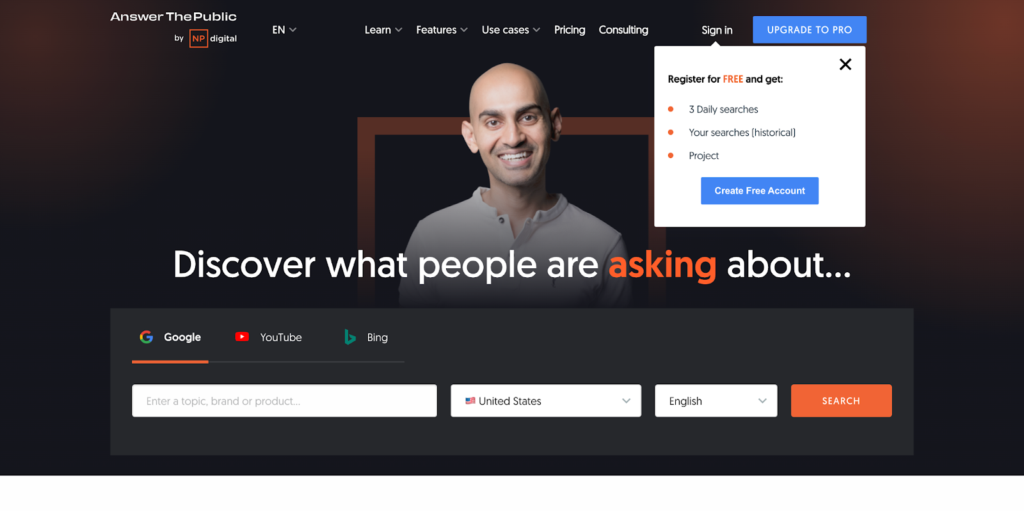
Answer the Public is a tool often used in the brainstorming phase of course creation. This resource prompts you to type in a topic, brand, or product. After hitting “Search,” the tool will generate a comprehensive list of questions, topics, and similar key terms, along with indicators for search volume and cost per click (CPC).
This tool can help you determine what additional topics, questions, or resources your students may need in their instruction, in addition to what search terms will help your content drive more organic traffic.
Features:
- Easy-to-use search feature
- Color-coded search volume data
- Comprehensive keyword search results
Ahrefs

After developing a list of keywords, key phrases, and questions on Answer the Public, take your data to a tool like Ahrefs. There, you’ll be able to search specific terms and receive key metrics like keyword difficulty (how hard it is to rank for that term) and search volume (how much traffic that search term has to offer overall).
Ahrefs will also give you a list of similar keywords and commonly asked questions, allowing you to refine your existing list of SEO keywords. While this tool is free, searches are limited to a certain number of results and queries.
Features:
- Color-coded keyword difficult metrics
- Search volume metrics
- Related keywords and questions
Semrush
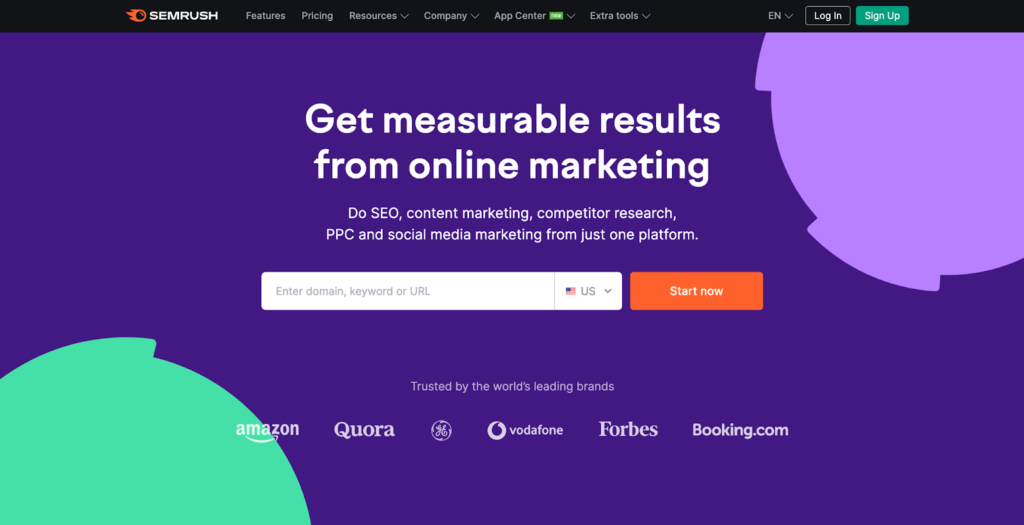
Of all the SEO tools in this list, Semrush is the most comprehensive. This tool allows you to not only conduct keyword research but also research your competitors, the keywords they rank for, their traffic, links that refer traffic to your site, and on-page and technical SEO metrics.
At first glance, this tool can be overwhelming. But with a designated number of free queries each day, it’s a powerful tool that offers substantial value to anyone willing to learn how to use even its most simple functions.
Features:
- Research your competitors
- Keyword research
- Link-building analysis and metrics
- Rank tracking
- On-page SEO and technical SEO data
Email Hunter

Email Hunter is, well, a tool that helps you track down email addresses. It’s a Chrome plugin that identifies any email addresses associated with a particular domain (and even works on LinkedIn). It’s probably one of my most used plugins!
Features:
- Versatile integrations on platforms like LinkedIn
- Browser-based application
- Generous free plan
Awario
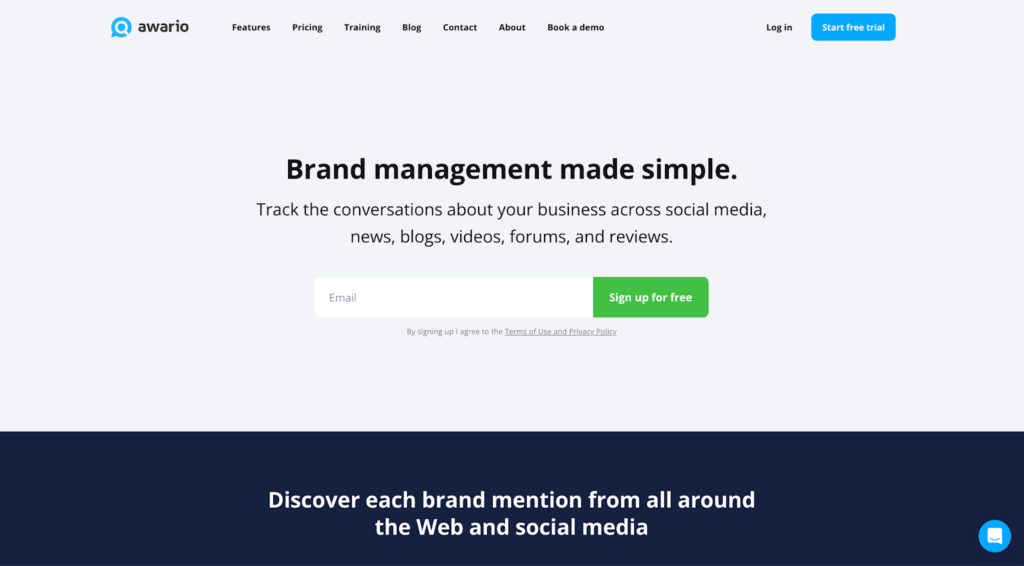
Awario helps businesses find influencers and monitor social conversation. This tool tracks topics you’ve hand-selected and will help you determine which influencers are most active in those conversations. These insights will help you select influencers most relevant to your niche and monitor trends and discussions within your niche.
Features:
- Social listening reports
- Slack integration
- Location-based monitoring
HARO

HARO stands for Help a Reporter Out, and it was originally designed to do exactly that. This is a tool where writers and subject matter experts alike gather for mutually beneficial engagements.
Writers submit inquiries, which include a detailed description and request for information. Subject matter experts respond to those inquiries with detailed answers and their contact information. In exchange for valuable quotes and content, writers will often link to the expert’s website or social profile.
As a professional building your own brand, submitting custom responses to relevant inquiries may earn you high-quality backlinks and valuable mentions in credible publications. Both of these can help build your reputation and bolster your website SEO.
Quora

Quora, whilst not necessarily a tool, is another great place to build your influence. Like HARO, Quora gives you the opportunity to build valuable backlinks and build your reputation. If your answer is seen as valuable by search engines, it could help build your website’s authority and drive traffic to your site.
Vimeo
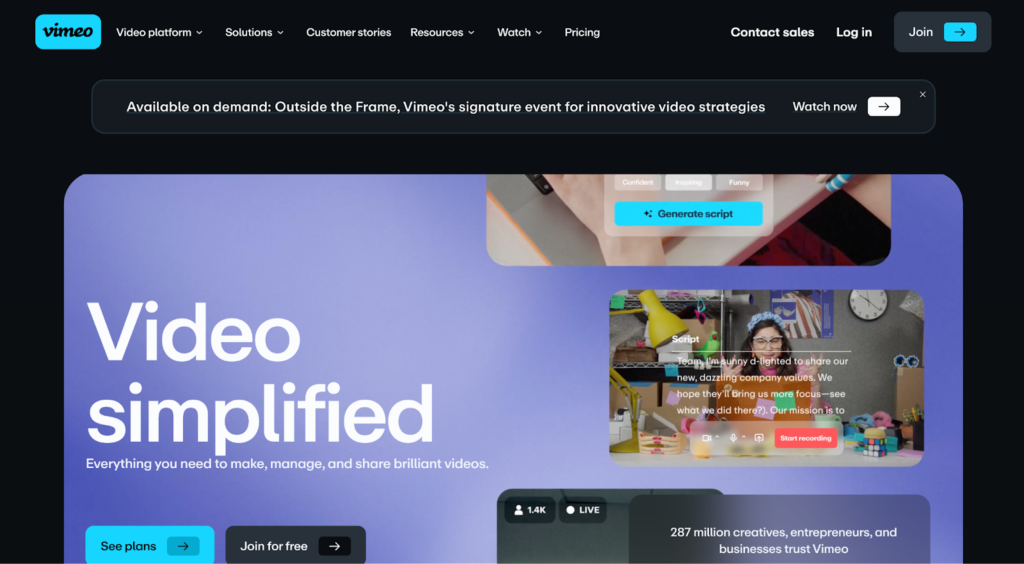
Vimeo is an industry-leading video hosting, live-streaming, and editing tool. Unfortunately, the tool is not free, but it is relatively cheap. Plans start at just $12/month. For just a few dollars more, you can gain access to script generators, teleprompters, text-based video editing, marketing integrations, and more.
This is an excellent tool if you are looking for multiple tools in one platform and have the budget to support the cost of the plans.
Features:
- Screen recording
- Video editing, sharing, and embedding
- Video privacy settings
- High-quality live streaming
iMovie
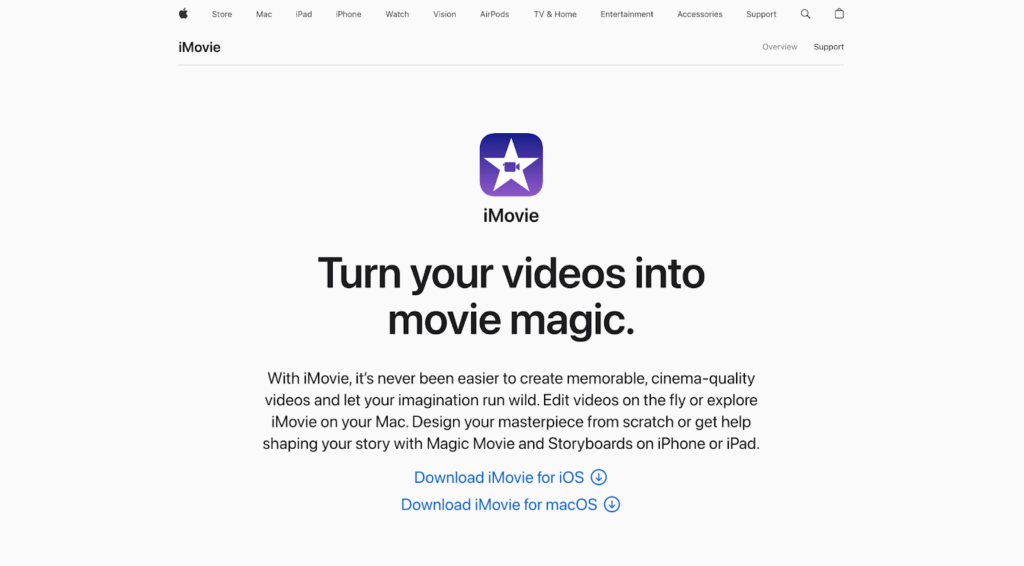
For Mac users, iMovie is an unmatched free video editing solution. This tool offers a high degree of customization, allowing creators to make their editing workflow as complicated or simple as they’d like.
As a bonus, if you’re working within the Apple ecosystem, iMovie can sync across devices so you can begin a masterpiece on your Mac and finish it on your iPhone. Many creators begin their video editing journey with this tool because it comes pre-installed on their devices, but its functionality is what earns it a spot on this list.
Features:
- Easy to learn and great for beginners
- Can add clips after editing has started
- A large selection of editing tools is available
Sumo
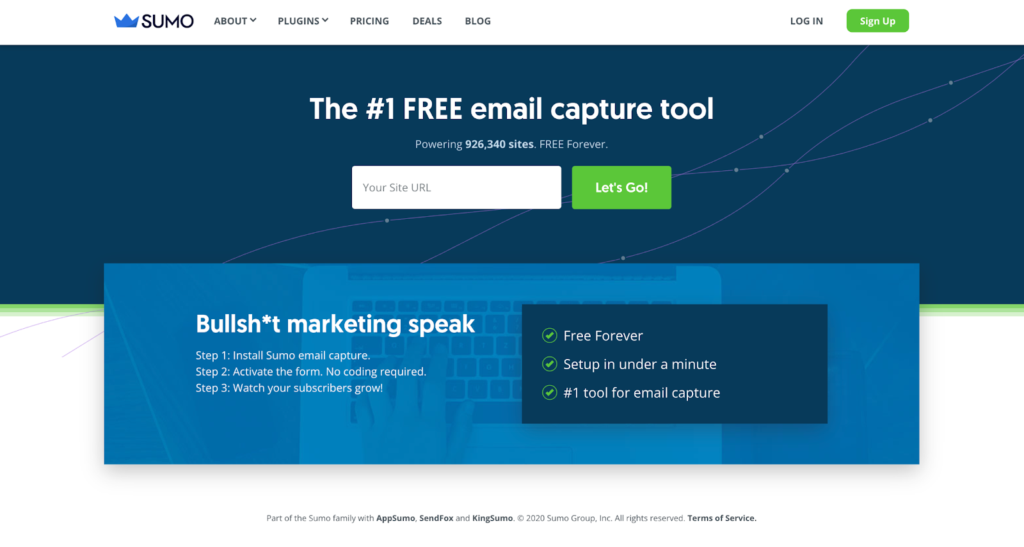
Sumo has a simple yet effective suite of tools you can use to capture the emails of the readers on your blog. Used well, this can supercharge your list growth, giving you plenty of leads to work with.
MailChimp
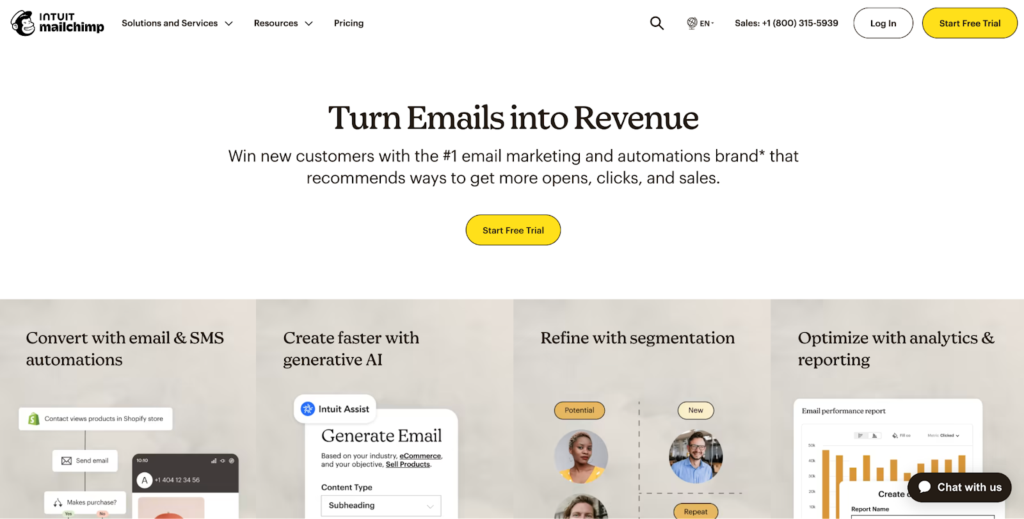
MailChimp is a marketing automation platform designed to simplify email marketing for businesses of all sizes. Online course creators can benefit from MailChimp’s range of tools and build email campaigns, automate follow-ups, and nurture leads.
The platform boasts a user-friendly interface and allows you to create visually appealing emails that boost enrollment and retention rates. MailChimp also provides data and analytics reporting, so you can measure the success of your campaigns and improve them over time.
Features:
- Create segmented email lists for more personalized campaigns
- Landing page builder
- Integrate with Thinkific directly
Really Good Emails

Really Good Emails is a platform that compiles visually engaging, creative, and impactful email designs from industries of all kinds. For new online course creators, this tool can act as a guide, giving you quick and easy access to email formats that are compelling and effective.
Final Thoughts
There you have it! Proof that you don’t need a huge budget, or any budget at all, to create and promote your online course.
Ready to create and launch your online course? Get started for free today with Thinkific. Our free plan allows you to build one course, one community, and enroll unlimited students, all without any transaction fees, so that you can start your online course business now.
This article was originally written in March 2017, it has since been updated in October 2023.





